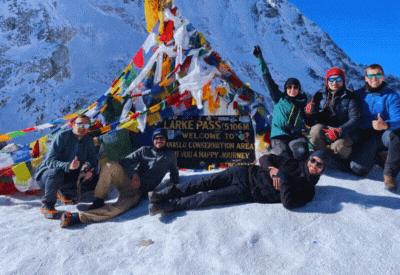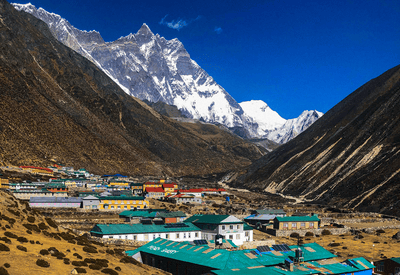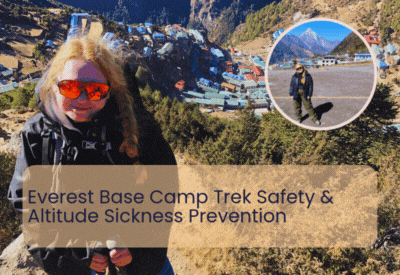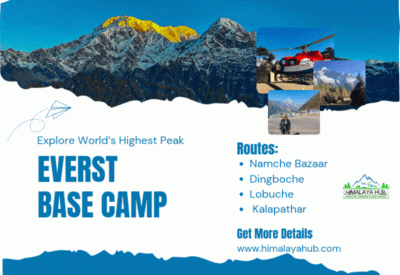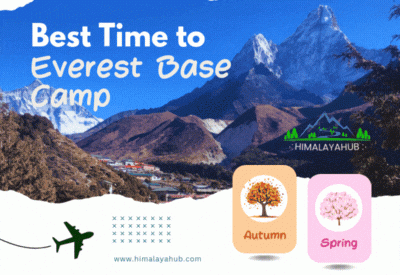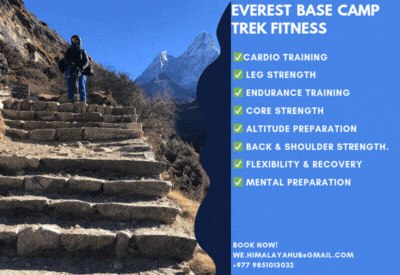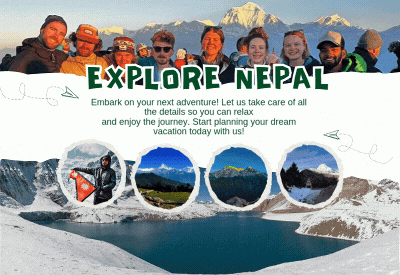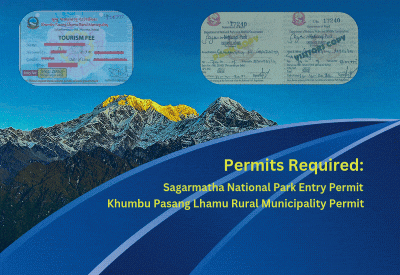Lunch & Dinner
Annapurna Circuit Trek: The Ultimate Guide for 2025
Lunch & Dinner
Table of Contents
The Annapurna Circuit Trek is one of the most iconic and breathtaking trekking routes in Nepal. Known for its diverse landscapes, stunning mountain views, and rich cultural experiences, it takes adventurers through the Annapurna Region Trek, crossing the famous Thorong La Pass (5,416m). As 2025 approaches, the Annapurna Circuit remains a top choice for trekkers worldwide. This comprehensive guide covers everything you need to know about trekking the Annapurna Circuit, from the best time to trek and itinerary details to costs, permits, and essential travel tips.
Best Time to Trek the Annapurna Circuit
Autumn (September - November): Considered the best season with clear skies, moderate temperatures, and vibrant landscapes.
Spring (March - May): Another excellent time, offering blooming rhododendrons and pleasant weather.
Winter (December - February): Possible but challenging due to heavy snowfall at Thorong La Pass.
Monsoon (June - August): Least recommended due to heavy rainfall and landslides.
Check our guide on: 🔗 Best time for annapurna circuit trek
Annapurna Circuit Trek Map
Explore the breathtaking route of the Annapurna Circuit with our custom interactive map. This detailed trekking map highlights key landmarks, teahouse stops, high-altitude passes, and scenic viewpoints across Nepal’s most iconic trail. Whether you’re planning your next adventure or simply discovering the beauty of the region, our map provides valuable insights and easy-to-follow directions to help you navigate the Annapurna Circuit with confidence. Experience an immersive view of the trekking route and start planning your journey today.
Annapurna Circuit Trek Itinerary (10-21 Days)
Arrival & Kathmandu Exploration (Day 1-3)
Arrival in Kathmandu
Land at Tribhuvan International Airport and transfer to your hotel. Rest and explore the city.
Sightseeing of Kathmandu Valley
Visit UNESCO World Heritage sites, including Swayambhunath, Pashupatinath, and Boudhanath.
Drive to Ngadi
Travel from Kathmandu to Besisahar to Ngadi (191km, 8hrs) and start the trek.
Trek to Manang (Day 4-8)
Trek from Ngadi to Jagat (13km, 6hrs)
This trek covers 13 km, passing through scenic landscapes, local villages, and lush forests.
Trek from Jagat to Dharapani (15km, 7hrs)
This trek spans 15 km, taking you through dense forests, crossing rivers, and passing traditional villages.
Trek from Dharapani to Chame (16km, 7hrs)
This trek take you through lush forests and scenic landscapes as you reach the scenic village of Chame.
Trek from Chame to Upper Pisang (13.7km, 6-7hrs)
This trek takes you through forests and villages, offering stunning views of the Annapurna range.
Trek from Upper Pisang to Manang (15.7km, 8-9hrs)
The trek from Upper Pisang to Manang takes you through alpine meadows and scenic villages
Acclimatization & Thorong La Preparation (Day 9-12)
Acclimatization in Manang (rest & explore)
Acclimatization in Manang allows rest and exploration, helping adjust to altitude while enjoying local sights.
Trek from Manang to Yak Kharka (10km, 5hrs)
This trek offers scenic views as you pass through alpine landscapes to reach Yak Kharka.
Trek from Yak Kharka to Thorong Phedi / High Camp (6-8km, 4-6hrs)
This trek ascends to the base camp, offering spectacular mountain views.
Cross Thorong La Pass (5,416m) to Muktinath (16km, 10hrs)
Crossing Thorong La Pass to Muktinath offers stunning views before reaching the sacred Muktinath temple.
Muktinath to Tatopani (Day 13-16)
Trek from Muktinath to Marpha (22km, 7hrs)
This trek takes you through scenic valleys and charming villages, ending in the peaceful village of Marpha.
Trek from Marpha to Ghasa (23km, 7hrs)
This trek takes you through picturesque landscapes, eventually reaching the village of Ghasa.
Trek from Ghasa to Tatopani (18km, 6hrs)
This trek takes you through lush forests and valleys, leading to the relaxing hot springs at Tatopani.
Relax in Tatopani (hot springs, rest day)
Relax in Tatopani with a rest day and rejuvenating hot springs.
Trek to Ghorepani & Poon Hill (Day 17-18)
Trek from Tatopani to Ghorepani (16km, 8hrs)
This trek takes you through dense forests and charming villages, leading to the beautiful viewpoint at Ghorepani.
Sunrise trek to Poon Hill (3,210m), then trek to Hile (14km, 6hrs)
This trek offers stunning views, followed by a trek to Hile through scenic landscapes and peaceful villages.
Pokhara Exploration (Day 19-20)
Trek from Hile to Nayapul, then drive to Pokhara (51km, 5-6hrs)
This trek is followed by a 5-6 hour drive back to Pokhara, passing through scenic landscapes and rivers.
Sightseeing around Pokhara (Phewa Lake, World Peace Pagoda, Davis Falls)
Sightseeing in Pokhara includes Phewa Lake, World Peace Pagoda, and Davis Falls etc.
Return to Kathmandu & Departure (Day 21)
Drive from Pokhara to Kathmandu (220km, 8hrs), final departure
Drive from Pokhara to Kathmandu for the final departure, enjoying scenic views along the way.
Looking for more trekking options?
Check out our exclusive Annapurna Circuit Trek Packages with group discounts!
Annapurna Circuit Trek Cost & Permits
The cost of the Annapurna Circuit Trek in 2025 varies depending on factors like group size, accommodations, and guide/porter services. On average:🔗 annapurna circuit trek cost
💰 Trek Cost:
$900 - $2,000 (depends on trek)
🏠 Food & Accommodation:
$20 - $40 per day
🧑✈️ Guide & Porter:
$25 - $30 per day
📊 Total Budget:
$1,200 - $2,500
📜 Permits Required
🛂 TIMS Card:
$20
🌿 Annapurna Conservation Permit (ACAP):
$30
Packing List for Annapurna Circuit Trek
Packing the right gear for Annapurna Circuit Trek ensures both comfort and safety. 🔗 Gear checklist for annapurna circuit trek
Thermal base layers
Waterproof trekking jacket & pants
Down jacket (for high altitudes)
Trekking boots & wool socks
Sleeping bag (-10°C recommended)
Trekking poles
First aid kit (including altitude sickness medication)
Water purification tablets
Challenges & Tips for a Successful Trek
Acclimatize properly, stay hydrated, and ascend gradually.
Cardiovascular and strength training recommended.
Be prepared for unpredictable weather, especially near Thorong La Pass.
Nearby Attractions & Side Trips
Tilicho Lake (4,919m): The highest lake in the world, a stunning detour from Manang.
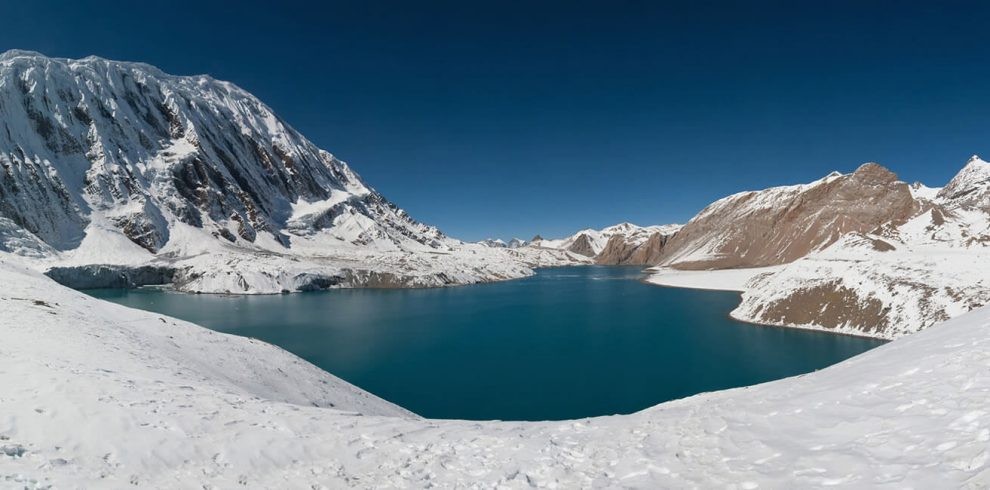 |
Poon Hill (3,210m): A must-visit for breathtaking sunrise views.
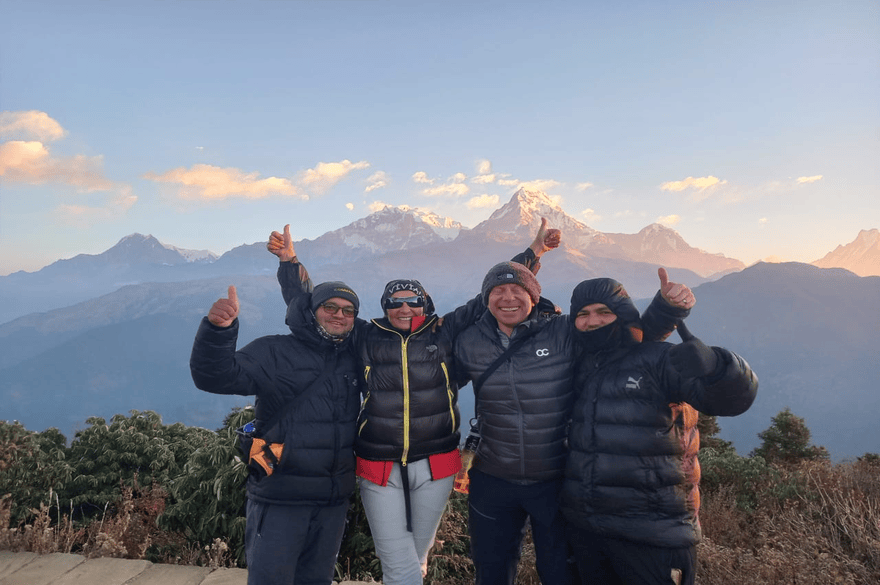 |
Muktinath Temple: A revered pilgrimage site.
.jpg) |
Ready to trek the Annapurna Circuit?
The Annapurna Circuit Trek offers an unforgettable adventure through diverse landscapes, high-altitude passes, and cultural richness. Whether you’re a seasoned trekker or a first-timer, this trek is a bucket-list experience. Start planning today and embark on an epic journey in 2025! Contact us today for expert guidance and trekking packages!
Book Your Trek Now
Why Follow Himalaya Hub?Our commitment to unforgettable experiences and customer satisfaction sets us apart. About Us |
Expert Guides
Our local guides are not just knowledgeable; they’re passionate about sharing the rich culture and beauty of the Himalayas.

Authentic Experiences
We focus on providing authentic, immersive experiences by connecting you with local communities and offering you a chance to explore Nepal

Customized Itineraries
Your trek, your way! We tailor every itinerary to match your pace and preferences, ensuring that you have the best possible adventure.

Annapurna Circuit Trek FAQ
Related Treks : 🔗 Annapurna Base Camp Trek 2025 , 🔗 Mardi Himal Trek , 🔗 Poon Hill Trek 2025



